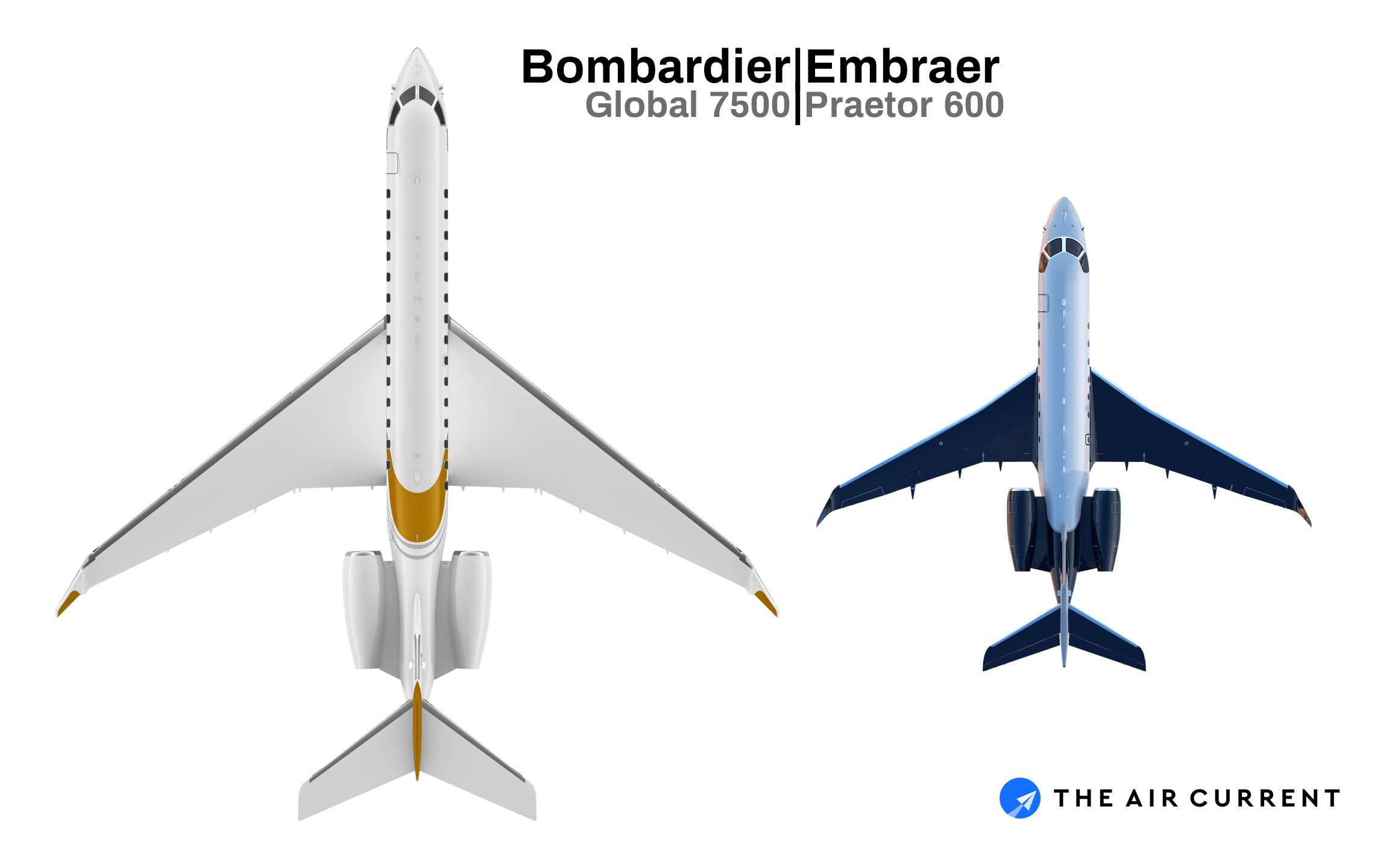The first of two parts examining the strategic landscape for the remaining Embraer and Bombardier business aircraft units.
Precisely a year ago, Airbus and Bombardier unveiled plans to give the Canadian commercial aircraft flagship a new lease on life. The surgical extraction of the C Series program redefined industrial battle lines and gave Airbus 50.01% ownership of the now-rebranded A220. Ten months later, Boeing followed suit with its own broad venture with Embraer’s commercial aircraft and KC-390.
But as Airbus and Boeing fortify their superduopoly with Bombardier and Embraer in tow, another strategic reality lurks in the background. Both companies’ business aviation units aren’t included in their respective joint ventures. In their heavily revised standalone forms, the business aircraft units at New Bombardier and New Embraer are the tentpole of their strategic futures – rising or falling independently of their European or American patrons.
Both Embraer and Bombardier rode into the annual National Business Aviation Association conference this week showcasing new aircraft. Bombardier’s ultra long range Global 7500 earned Transport Canada certification for the 7,700 nautical mile-endurance jet. And Embraer unveiled a pair of updated midsize and super-midsize contenders, the Praetor 500 and 6005, the latter of which has expanded range up to 3,900 nautical miles. Though in completely different product classes, both tout superlative endurance and performance over their competitors at Dassault, Gulfstream and Textron.
Continue Reading...
Subscribe to Continue Reading
Our award-winning aerospace reporting combines the highest standards of journalism with the level of technical detail and rigor expected by a sophisticated industry audience.
- Exclusive reporting and analysis on the strategy and technology of flying
- Full access to our archive of industry intelligence
- We respect your time; everything we publish earns your attention

